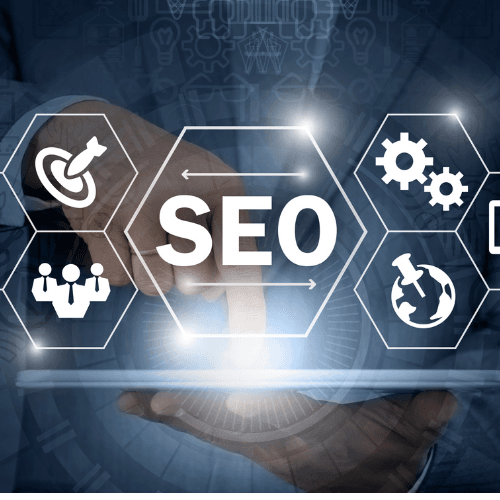Why Optimized Images are Crucial for SEO and User Experience
In the digital age, images are an essential part of web content, making it visually engaging and informative. However, using large, unoptimized images can significantly slow down a website, negatively affecting SEO and the user experience. Optimizing images for web use ensures fast loading times, better performance, and improved rankings on search engines. Let’s dive into why image optimization matters and how to do it right.
What is Image Optimization?
Image optimization refers to the process of reducing the file size of an image without compromising its quality. This makes images load faster while maintaining visual appeal. It involves using the right file formats, compressing images, and properly setting dimensions. The goal is to enhance page load speed, mobile performance, and SEO.
The Importance of Optimized Images for SEO
Faster Page Load Times: One of the biggest factors affecting SEO is page speed. Large images can drastically slow down your website, leading to a poor user experience and increased bounce rates. Faster load times not only improve user engagement but also signal to search engines that your website is well-optimized, contributing to better rankings.
Improved User Experience: Users expect fast, smooth-loading websites. When images load slowly or disrupt the browsing experience, users are more likely to leave. Optimized images ensure that your site loads quickly, providing a seamless experience for visitors.
Enhanced Mobile Experience: With mobile traffic accounting for a significant portion of web visits, image optimization becomes even more crucial. Mobile devices often have slower internet connections, and large images can significantly hinder performance. Optimized images ensure that your site is mobile-friendly, enhancing accessibility across all devices.
Better Search Engine Rankings: Search engines, such as Google, consider page load speed as a ranking factor. By using optimized images, you can improve your site’s loading times, thereby positively impacting SEO. Additionally, search engines also consider image alt text for indexing, so it’s essential to use descriptive, keyword-rich alt tags.
Best Practices for Optimizing Images
Choose the Right File Format: The file format you choose plays a significant role in image optimization. The most common formats are:
- JPEG: Best for photographs or images with many colors. It offers high compression with minimal quality loss.
- PNG: Ideal for images with transparency or simple graphics. It maintains image quality but has a larger file size compared to JPEG.
- WebP: A newer format that provides excellent quality with smaller file sizes, making it ideal for both photos and graphics.
- SVG: Best for vector-based images like logos or icons, as they are resolution-independent and small in size.
Compress Image Files: Image compression reduces the file size without noticeable loss of quality. There are two types of compression:
- Lossy Compression: Reduces the file size by permanently removing some image data. It’s suitable for web images where small quality losses are acceptable.
- Lossless Compression: Compresses the image without losing any data, preserving the original quality. It’s ideal for images that need to retain high quality, like logos.
Tools like TinyPNG, ImageOptim, or online platforms like Kraken.io can help automate the compression process.
Resize Images: Resizing images to fit their container on the page is an essential step. If you upload a 3000px image but only display it at 800px, you’re unnecessarily increasing the file size. Ensure that the images are sized correctly for their intended display size, preventing wasteful use of bandwidth.
Use Image CDN (Content Delivery Network): An image CDN stores your images on multiple servers across various locations, making it easier to load images faster regardless of the user’s geographical location. By delivering images from the server closest to the user, an image CDN significantly improves load time.
Optimize Image Alt Text: Alt text is crucial for both SEO and accessibility. Alt text describes an image to search engines and visually impaired users. It should be descriptive and contain relevant keywords, helping improve both search engine indexing and the accessibility of your website.
Lazy Loading: Lazy loading is a technique where images are loaded only when they enter the viewport (the visible part of the screen). This means that images not immediately visible to the user won’t be loaded until the user scrolls down. This reduces initial page load time and saves bandwidth, improving overall site performance.
The Impact of Optimized Images on SEO and Business
Better Rankings: Optimized images contribute to faster load times, which in turn improves SEO. Google’s Core Web Vitals update places a strong emphasis on page speed, and faster images directly help with this. Websites that load faster tend to have lower bounce rates, higher engagement, and more favorable SEO rankings.
Increased Conversion Rates: When your website loads quickly and offers an excellent user experience, visitors are more likely to stay longer, interact with your content, and convert into customers or leads. Optimized images reduce friction, improving overall conversion rates.
Improved Brand Perception: A website that performs well, loads quickly, and delivers a smooth browsing experience gives a positive impression of your brand. On the other hand, slow-loading pages due to large, unoptimized images can create frustration and diminish user trust.
Conclusion
Optimized images are a fundamental component of a fast, efficient, and SEO-friendly website. By following best practices for compression, resizing, choosing the right format, and utilizing tools like lazy loading and CDNs, you can enhance both user experience and search engine rankings. The impact of optimized images extends beyond just performance; it improves your website’s accessibility, brand perception, and ultimately, conversion rates. Prioritizing image optimization is a key step towards a better, more successful website.






